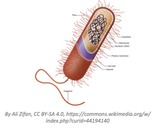
An overview of the membrane-bound structures that form the endomembrane system in eukaryotic cells.
- Subject:
- Biology
- Life Science
- Material Type:
- Lesson
- Provider:
- Khan Academy
- Provider Set:
- Khan Academy
- Author:
- Sal Khan
- Date Added:
- 07/23/2015

An overview of the membrane-bound structures that form the endomembrane system in eukaryotic cells.

This resource is a video abstract of a research paper created by Research Square on behalf of its authors. It provides a synopsis that's easy to understand, and can be used to introduce the topics it covers to students, researchers, and the general public. The video's transcript is also provided in full, with a portion provided below for preview:
"One of the hallmarks of eukaryotic cells is the presence of organelles. Because each plays a distinct role in cell health, organelles require unique sets of proteins formed in the outlying cytoplasm, which means each organelle must have molecular machinery for recognizing and importing these proteins. For proteins destined for the nucleus, “nuclear localization signals” (NLSs) facilitate this process. An NLS is a short amino acid sequence that signals “pickup” by nuclear transporters. In recent years, NLSs have been widely used in cancer treatment and the prevention of viral infection. The trafficking of proteins into the nucleus through NLSs is mediated by proteins referred to as “importins.” Classical NLSs (cNLSs) on cargo proteins are sequentially recognized by the importin α and β subunits and then shuttled into the nucleus through a series of steps. Nuclear proteins can also rely on non-classical NLSs (ncNLSs) that help them “piggyback” on other proteins that contain classical NLSs..."
The rest of the transcript, along with a link to the research itself, is available on the resource itself.

Cells are the fundamental unit of all living things; however, there are many different types of cells. Students often look at the world with a concrete, inflexible view, knowing only what they see with their eyes. Life is diverse and different, and you will be challenged as you investigate life that is different from you. For this experience, we focus on one of the two major divisions of cells called Prokaryotic Cells. These cells are considered primitive compared to the cells that make up humans. Learners will explore various types of prokaryotic cells and reflect on how they relate to their cell functions.StandardsBIO.A.1.2.1 Compare cellular structures and their functions in prokaryotic and eukaryotic cells